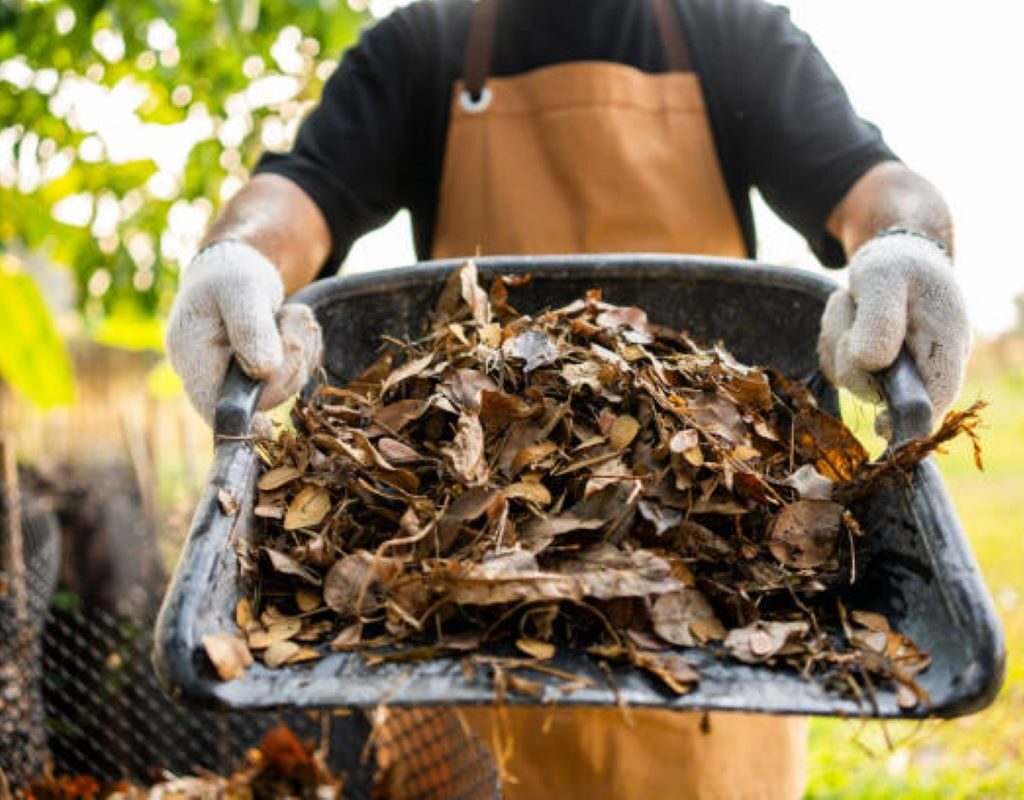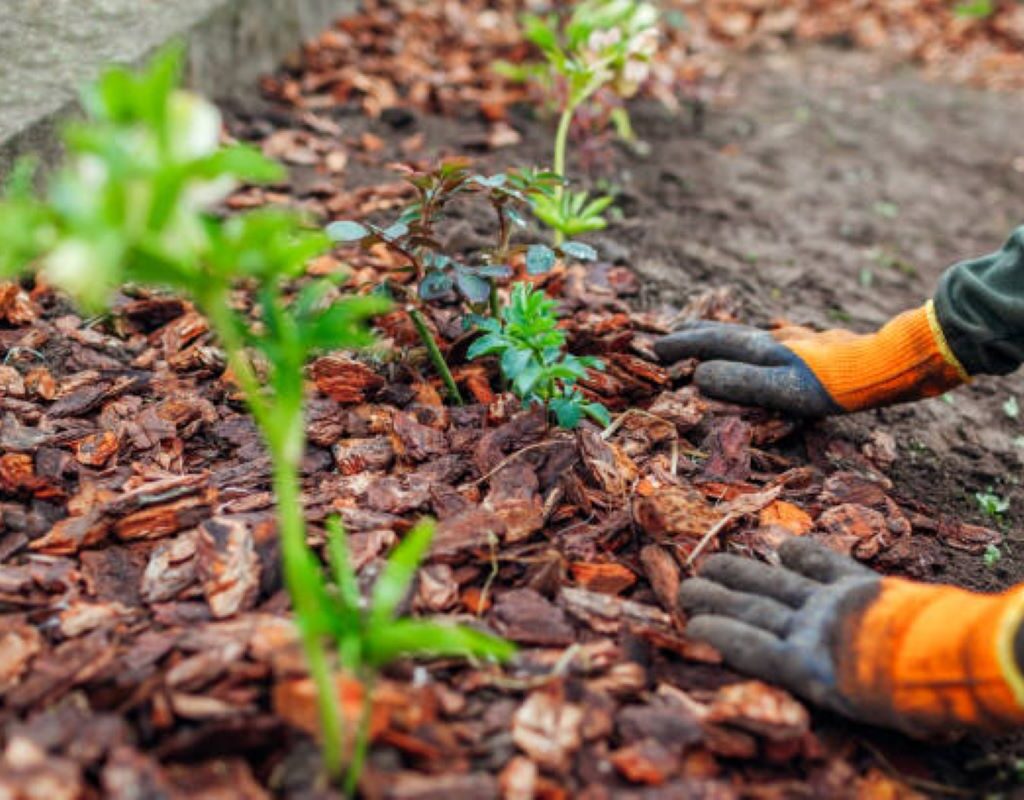Wood chip mulch is a natural and sustainable solution for improving garden beds. It is made from shredded or chipped parts of trees, such as bark, branches, and leaves, which create a protective layer when spread over soil surfaces.
A well-maintained garden needs proper mulching techniques to create the best growing conditions. Wood chip mulch has several important functions in garden beds:
- Protects the soil from external elements
- Keeps the soil moisture levels consistent
- Regulates temperature changes in the soil
- Prevents unwanted weeds from growing
- Provides essential nutrients through natural decomposition
The benefits of wood chip mulch in garden beds go beyond these basic functions. Its chunky texture allows water to penetrate properly while still retaining moisture. The natural decomposition process improves the structure of the soil, supports beneficial microorganisms, and promotes long-term soil health. Additionally, wood chip mulch adds a visually appealing and natural look to the garden design while also providing practical benefits for plant growth and maintenance.
1. Nutrient Enrichment and Soil Health Improvement
Wood chip mulch acts as a natural soil enhancement system through continuous decomposition. As beneficial microorganisms break down the wood chips, they release essential nutrients directly into the soil, creating a rich environment for plant growth.
The decomposition process adds vital organic matter to the soil structure:
- Carbon-rich materials feed soil bacteria and fungi
- Nitrogen release occurs gradually as wood chips decompose
- Trace minerals become available through microbial activity
This natural enrichment process creates a self-sustaining cycle:
- Wood chips decompose
- Organic matter increases
- Soil structure improves
- Plant roots access nutrients
- Garden health flourishes
The steady release of nutrients from wood chip decomposition reduces or eliminates the need for synthetic fertilisers. A 7-10cm layer of wood chip mulch provides sufficient organic matter to maintain healthy soil biology and structure throughout growing seasons.
Research shows gardens mulched with wood chips demonstrate improved:
- Soil porosity
- Water retention capacity
- Nutrient availability
- Root development
- Plant vigour
2. Soil Temperature Regulation
Wood chip mulch acts as a natural temperature regulator for garden soil, creating an insulating barrier between the ground and external elements. During hot summer months, this protective layer reflects sunlight and reduces heat penetration, maintaining soil temperatures up to 10°C cooler than exposed ground.
In winter, wood chips trap warmth within the soil, protecting delicate root systems from frost damage and sudden temperature fluctuations. This insulating effect creates a stable growing environment that supports:
- Root Development – Consistent soil temperatures encourage robust root growth
- Microbial Activity – Steady temperatures maintain beneficial soil organism populations
- Nutrient Uptake – Plants absorb nutrients more effectively in temperature-controlled environments
- Stress Reduction – Protected roots experience less shock from seasonal changes
The chunky texture of wood chips creates small air pockets that enhance the insulating properties. A layer 7-10cm deep provides optimal temperature control while allowing proper soil ventilation. This natural temperature regulation helps plants thrive through extreme weather conditions and seasonal changes.
3. Moisture Conservation and Drought Stress Reduction
Wood chip mulch creates a protective barrier between soil and atmosphere, significantly reducing water evaporation rates. This natural shield locks moisture into the soil profile, maintaining consistent hydration levels for plant roots.
The chunky texture of wood chips allows water to penetrate while creating small air pockets that trap moisture. Research shows gardens with wood chip mulch require up to 40% less frequent watering compared to unmulched beds.
During drought conditions, wood chip mulch proves invaluable:
- Creates a humid microclimate around plant roots
- Reduces soil water loss through evaporation
- Maintains soil moisture levels for extended periods
- Protects shallow root systems from drying out
The moisture-retention properties of wood chips enable plants to develop deeper, stronger root systems. These enhanced root networks help plants access water reserves deeper in the soil profile, building natural resilience against dry spells and reducing the need for supplemental irrigation.
A 7.5cm layer of wood chip mulch provides optimal moisture conservation while allowing proper soil aeration and water infiltration during rainfall events.
4. Benefits of Weed Suppression and Garden Maintenance
Wood chip mulch creates a natural barrier against unwanted plant growth in garden beds. The thick layer of chips blocks sunlight from reaching weed seeds, preventing their germination and establishment. A 7-10 cm layer proves most effective for weed suppression.
This light-blocking action delivers multiple benefits:
- Reduced Manual Labour: Less time spent pulling weeds means more time enjoying the garden
- Chemical-Free Control: Eliminates the need for herbicides, supporting organic gardening practices
- Resource Protection: Desirable plants face minimal competition for essential nutrients and water
The chunky texture of wood chips creates gaps that allow water to penetrate while maintaining the light barrier. Unlike solid plastic barriers, wood chip mulch permits beneficial organisms to move through the soil while still preventing most weed growth.
Garden beds with wood chip mulch require significantly less maintenance throughout the growing season. The natural weed suppression creates a neat, tidy appearance without constant intervention.

5. Protection for Trees and Plants
Wood chip mulch creates a protective barrier around trees and plants, serving as a natural shield against mechanical damage. A thick layer of wood chips prevents direct contact between lawn maintenance equipment and vulnerable tree trunks, reducing the risk of bark injuries from mowers and string trimmers.
The ideal protective zone extends 1-2 metres from the tree trunk, creating a safe buffer that:
- Eliminates the need for close-range mowing
- Protects surface roots from compaction
- Reduces bark damage from maintenance equipment
- Creates a defined border for landscaping activities
This protective mulch ring acts as a natural weed barrier near the tree’s critical root zone. The wood chips suppress unwanted vegetation growth while allowing essential water and nutrients to reach the root system.
For optimal protection, maintain a mulch depth of 5-10 centimetres, keeping the material slightly away from direct contact with the tree trunk to prevent moisture-related bark issues. This spacing allows proper air circulation while maintaining the protective benefits of the mulch barrier.
Additionally, it’s important to follow some tree care tips such as monitoring the health of your trees regularly and adjusting your care routine based on their specific needs.
6. Environmental Sustainability Advantages
Wood chip mulch is a great example of sustainable gardening practices that effectively recycle waste. Tree services produce large amounts of green waste during pruning and removal operations. By turning this material into mulch, we create a valuable resource for gardens while keeping organic matter out of landfills.
The environmental benefits go beyond just reducing waste:
- Landfill Space Conservation: Every cubic metre of wood chips repurposed as mulch saves precious landfill capacity
- Methane Reduction: Organic materials in landfills decompose without oxygen, producing methane – a powerful greenhouse gas
- Carbon Storage: Wood chips break down slowly in garden beds, storing carbon in the soil for a longer time
- Local Resource Usage: Getting mulch from nearby tree services reduces emissions from transportation
- Natural Resource Conservation: Using wood chip mulch decreases reliance on commercial products that require manufacturing processes
This eco-friendly approach follows the principles of a circular economy, where waste is transformed into a valuable resource. It supports local green waste management efforts while enhancing garden ecosystems through natural processes.
7. Availability and Cost Effectiveness
Wood chip mulch stands out as one of the most budget-friendly options for garden maintenance. Local arborists and tree removal companies generate substantial amounts of wood chips as a byproduct of their services, making this resource readily available at minimal to no cost.
Many tree service companies offer:
- Free delivery of fresh wood chips to local residents
- Bulk quantities suitable for large garden areas
- Regular supply throughout the pruning season
The cost comparison between wood chip mulch and commercial alternatives reveals significant savings:
Commercial Mulch vs Wood Chips
- Packaged bark mulch: £5-8 per bag
- Decorative mulch: £7-12 per bag
- Wood chips from arborists: Often free or minimal delivery fee
Tree removal companies welcome the opportunity to dispose of wood chips locally, creating a win-win situation for both parties. Gardeners can establish relationships with local tree services for consistent supply, while businesses reduce their disposal costs.
A single tree removal operation can generate enough wood chips to mulch multiple garden beds, providing a sustainable and economical solution for garden maintenance.
See Also : Wood Chips vs Mulch: Which Option is Best for Soil Health?
8. Water Penetration and Soil Aeration Benefits
The chunky structure of wood chip mulch creates natural pathways for water to flow through, enabling efficient water penetration into the soil beneath. Unlike fine mulches that can form dense, hydrophobic mats when wet, wood chips maintain their structure and allow rainwater and irrigation to reach plant roots effectively.
Wood chips’ irregular shapes create small air pockets between particles, supporting vital soil aeration processes:
- Enhanced Oxygen Flow: The spaces between chips allow air movement through the soil, essential for root health
- Improved Drainage: Natural channels prevent water pooling and root rot
- Soil Structure Protection: The loose arrangement prevents soil compaction
The combination of proper water permeability and aeration creates ideal growing conditions for beneficial soil microorganisms. These organisms break down organic matter, improving soil structure and nutrient availability for plants.
Wood chip mulch’s ability to balance water infiltration with air circulation makes it an excellent choice for maintaining healthy garden bed ecosystems, particularly in areas with heavy clay soils or regions prone to waterlogging.
Addressing Common Concerns about Wood Chip Mulch
Wood chip mulch brings numerous benefits to garden beds, yet certain misconceptions need clarification for optimal use. A primary concern centres around nitrogen immobilisation – the process where decomposing wood temporarily ties up nitrogen in the soil. This effect remains limited to the soil-mulch interface when wood chips are used as surface mulch rather than tilled into the soil.
Key Points About Nitrogen Balance:
- Surface mulching with wood chips affects only the top layer
- Plants with established root systems remain unaffected
- Adding nitrogen-rich materials like grass clippings or composted manure can offset any temporary deficiency
Safe Sourcing Practices:
- Source wood chips from reputable tree services
- Request confirmation that trees were not chemically treated
- Avoid wood chips from unknown sources or treated lumber
Signs of Safe Wood Chips:
- Natural wood colour without artificial staining
- Fresh, earthy smell
- Free from paint, stains, or preservatives
- Varied sizes of chips and bark pieces
The presence of chemical treatments in wood chips poses risks to soil health and plant growth. Treated lumber often contains preservatives like chromated copper arsenate (CCA), which can leach harmful substances into garden soil. Selecting untreated wood chips from local arborists ensures a chemical-free mulching material that supports healthy garden ecosystems.

Potential Pest Attraction
Wood chip mulch creates natural habitats that attract diverse insects and organisms, contributing to a balanced garden ecosystem. Beneficial creatures like:
- Ground beetles – natural pest controllers
- Earthworms – soil aerators and decomposers
- Predatory insects – natural pest management
The moist environment under wood chips can attract slugs and snails. Simple management strategies help maintain control:
- Create copper barriers around vulnerable plants
- Apply diatomaceous earth at mulch edges
- Maintain proper mulch depth (5-10cm)
- Keep mulch 10cm away from plant stems
These minor pest concerns are outweighed by the ecological benefits of wood chip mulch. The enhanced biodiversity supports natural pest control while improving soil health through increased organic matter decomposition and nutrient cycling.

